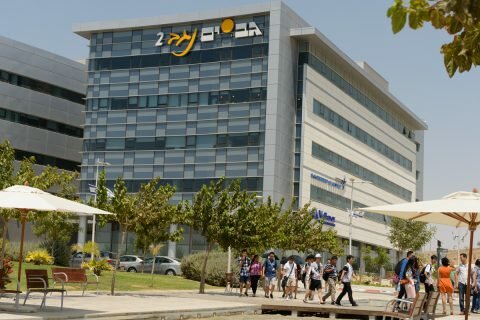About Us

Beer-Sheva and the Negev
The City of Beer-Sheva
BGU is located in Beer-Sheva, which is and often referred to as the capital of the Negev region. Tied to biblical times, Beer-Sheva’s history predates Abraham, making it one of the oldest cities in the world.
Today, the city boasts a diverse population of 200,000 people, of which approximately 19,500 are BGU students and an additional 10,000 students attending other higher education institutions in the city. Making their way around the city, visitors and residents can witness the convergence of history with modernity in this beautiful desert city. Its Old City is home to such historic sites as Abraham’s well, remains of a Byzantine church, and remnants of buildings from the Ottoman period. Also known as the City of Patriarchs, the city has a wonderful Bedouin market on Thursdays, one of the oldest in the country.
Juxtaposed with the city’s pride in its ancient history is the vision for its future. A shining example of this vision the new Advanced Technologies Park, a collaboration between Ben-Gurion University, the Municipality of Beer-Sheva, and KUD International LLC, which aims to promote technology and commercialization of cutting-edge research and innovation being developed through BGU and affiliate institutions such as the Soroka University Medical Center and the National Institute of Biotechnology in the Negev.
One of the fields in which BGU has become a leader is cybersecurity; be sure to check out Negev Stories: Cyber Solutions to learn more about the University and the Negev’s role in the area. In addition, the Israel Defense Force is building a 2-million-square-foot high-tech telecommunications R&D center next to the park that will attract private contractors who will generate further opportunities for collaboration.
These developments have helped to bring the city of Beer-Sheva to the world stage and to become both the future Silicon Valley of the Middle East, as written by Forbes, and a cybertech oasis, as written by TechCrunch. In fact, in a collaborative study between T3 Advisors and Brandeis International Business School, Beer-Sheva was listed as one of seven worldwide “cities of tomorrow” that are up-and-coming hubs that technology and life sciences companies should consider as they evaluate their global location strategy.
The past few years have seen a massive transformation in the city that has resulted in the building of numerous cultural centers, parks, and sporting venues. Within walking distance or a short bus ride from campus, students can visit venues such as the Carasso Science Park (Israel’s largest science park), Negev Zoo, Beer-Sheva Ring Trail (an ideal destination for runners, bikers, and hikers), and the Beer-Sheva River Park, a 1,280 acre metropolitan park that will emphasize the protection of the Beer-Sheva River and conservation of the region’s unique ecosystem.
An internationally renowned chamber orchestra (The Israel Sinfonietta Beer-Sheva), local theaters (The Beer-Sheva Theater and Fringe Theater), art museums (The Negev Museum of Art, Center for the Arts, the Artist’s House in the Negev, and the Ethiopian Arts Workshop), and dance company (Kamea Dance Company) highlight just some of the artistic contributions made by Beer-Sheva residents. In addition, shopping malls (including one of the largest in the Middle East), movie theaters, cafes, restaurants, pubs, and dance clubs abound in the city. In fact, so much is happening in the city that the Jewish National Fund focused an entire issue of their newsletter on Southern Israel, including one article entitled, “The Tel Aviv Experience Replicated in Be’er Sheva.” Together with on-campus events organized by BGU students, participants in the OSP will never be lacking in something to do.
Israel’s largest cities, Tel Aviv and Jerusalem, are easily accessible from Beer-Sheva. The Israel Railways intercity rail station is across the street from the dorms and only a three minute walk from the main BGU campus. It provides modern high-speed train service between Beer-Sheva and Tel Aviv in under an hour, with service continuing to Haifa and the north. Jerusalem is only an hour and a half ride away by taxi or bus, which depart right from the main campus. Eilat, Israel’s southernmost city and international tourist destination on the Red Sea, is only a bus ride away.
OSP alumni have reported that BGU’s location makes it ideal for exploring all parts of Israel both on their own and through OSP organized programs.
The Negev Region
The Negev desert, which comprises 60 percent of Israel’s landmass but only eight percent of its population, is home to some 550,000 people, including 160,000 Bedouins. The Negev, itself, is part of an awe-inspiring desert that stretches from Egypt through the southern part of Israel to Jordan and Saudia Arabia. Visitors can explore desert flats, sand dunes, desert pavements, cliff faces and deep canyons that stretch for dozens of miles. The Dead Sea, Ein Gedi, Masada and Mitzpeh Ramon are all within close proximity to Beer-Sheva as are the extensive ruins of Avdat (Nabatean, Roman and Byzantine buildings). In the winter and spring months, the Negev is destination for nature lovers in search of the magnificent annual blossoming of desert wildflowers. Israel’s Negev Desert has been voted the #2 tourist destination in the world.
